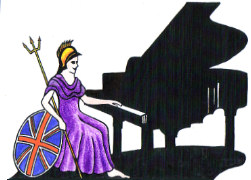Teachers, Accompanists and Piano Entertainers in the UK

UK Piano Page

Lenton Boulevard
Nottinghamshire NG7 2BY
England
Over many years, we have carefully selected what
2 Clay Bank Villas
Blidworth
Nottingham, Nottinghamshire NG21 0QS
England
Concert Quality rebuilt Grand pianos for the
Unit 14a, Granary Business Centre
Broad Farm, North Street
Hailsham, West Sussex BN27 4DU
England
Located in the Sussex countryside, we are a family
Orchards Farm
Iden
Rye, East Sussex TN31 7XB
England
Established since 1984, we are situated at the
1 Queen Street
Horsham, West Sussex RH13 5AA
England
The Horsham Piano Centre was established in 1980
Music Festival for performers and guests Our 10th
18-06-2022 01:30PM
The Morecambe Bay Piano Group was set up to extend
11-12-2021 02:00PM
The Morecambe Bay Piano Group was set up to extend
08-01-2022 02:00PM
The Morecambe Bay Piano Group was set up to extend
12-02-2022 02:00PM
What is the difference between Overdamping and Underdamping?
Take the same elastic band and place your finger near the centre to stop it from vibrating this is underdamping, which of course is more efficient. Overdamping is controlled by gravity where as underdamping is controlled by adjustable springs so on the whole underdamping is far more efficient than overdamping. However, there is one disadvantage with underdamping. That is, if the dampers are incorrectly aligned to the nodes and antinodes of the vibrating string this will result in, the dampers when they come in contact with the string, emphasising certain harmonics on the piano, thus giving you a harmonic ring, this is more common on small uprights and small grandís as the margin of tolerance decreases as the piano becomes smaller.